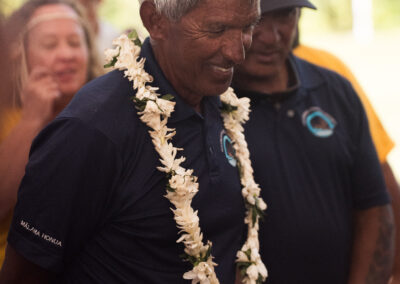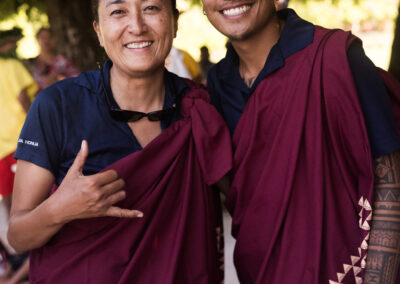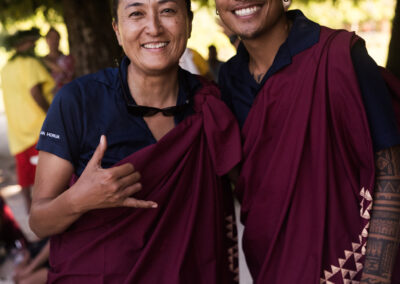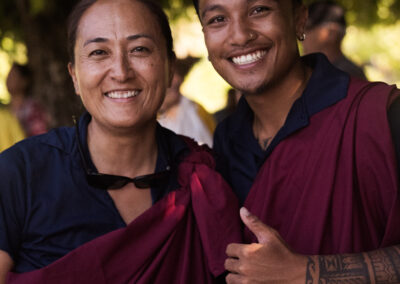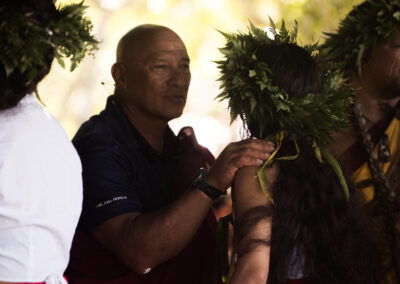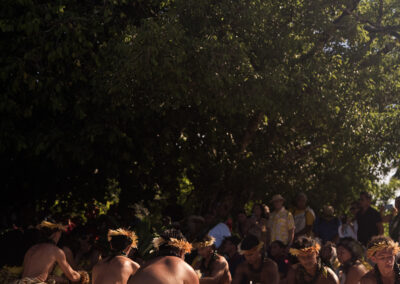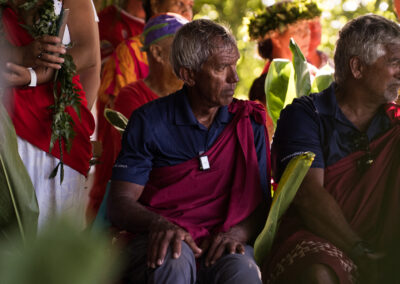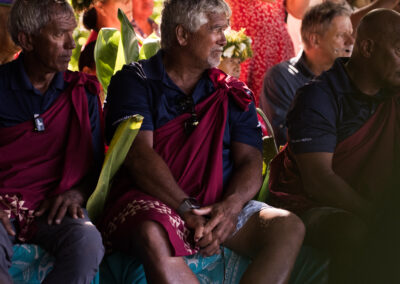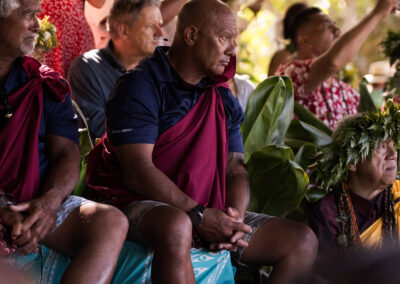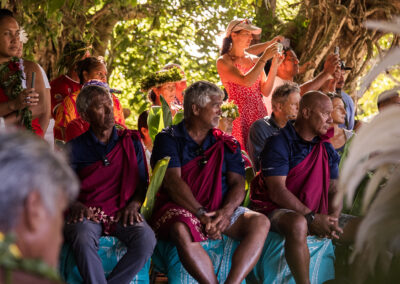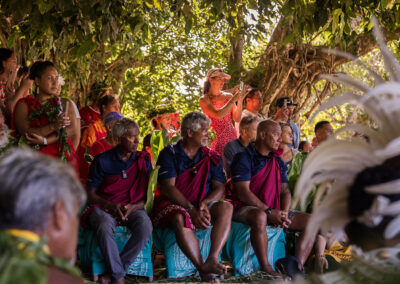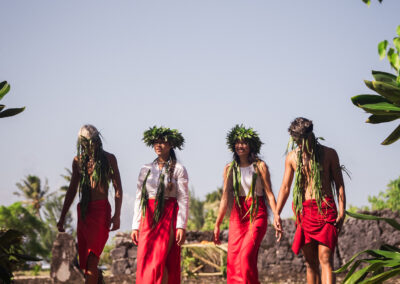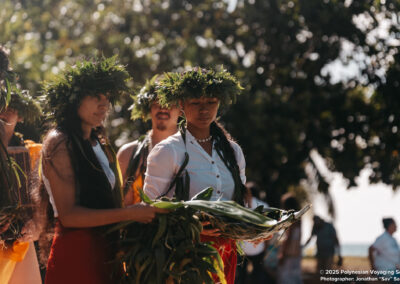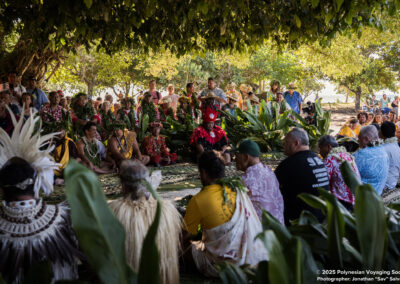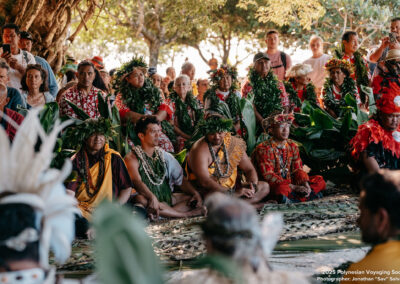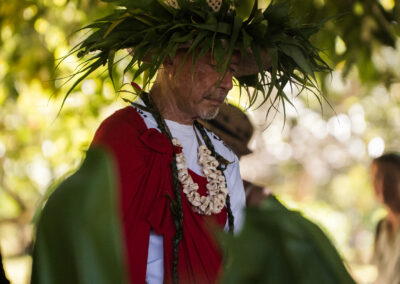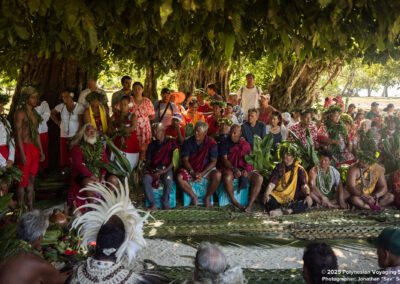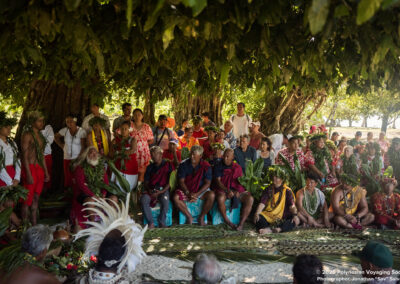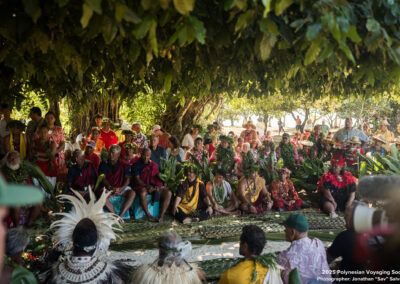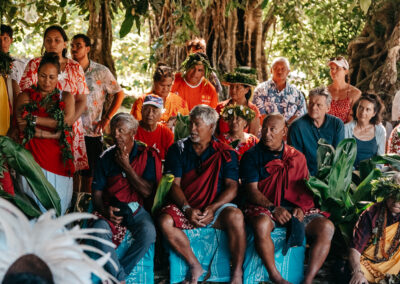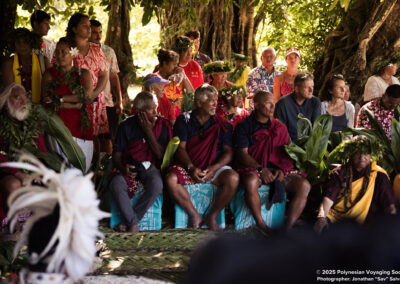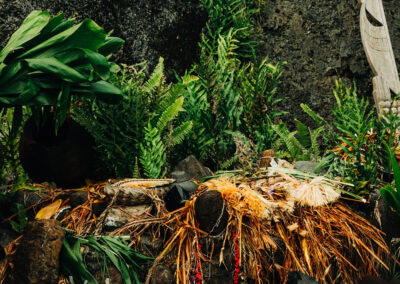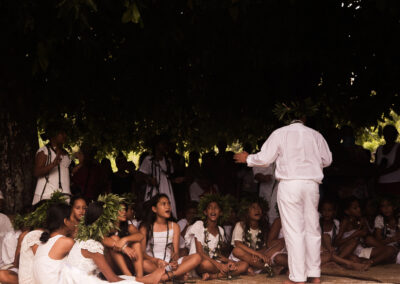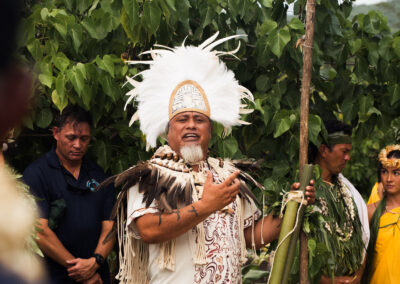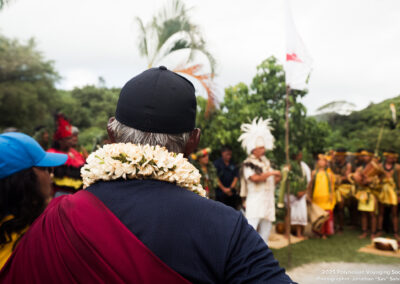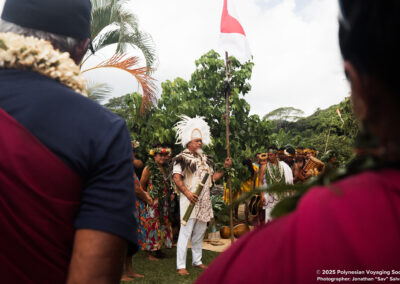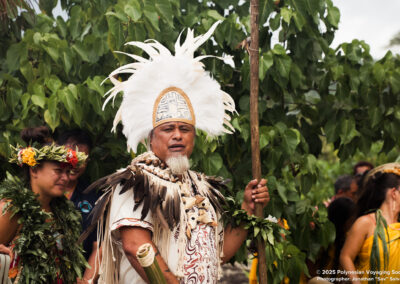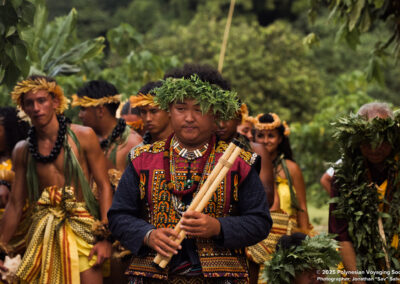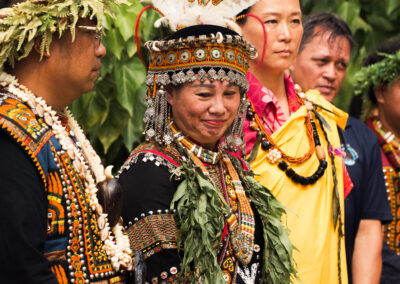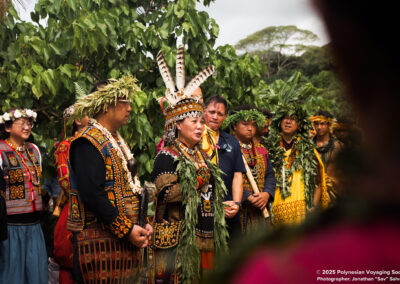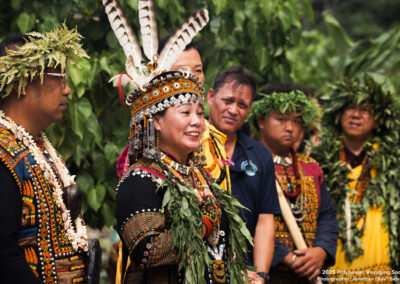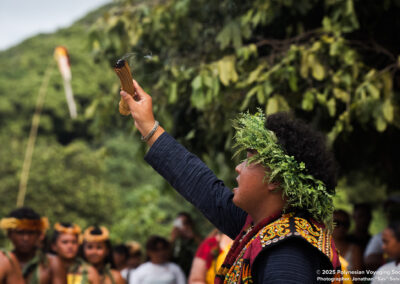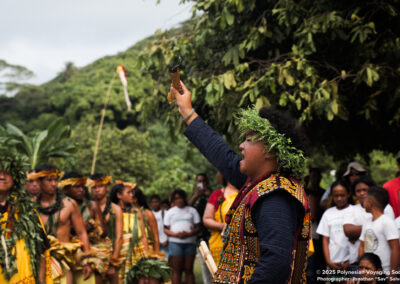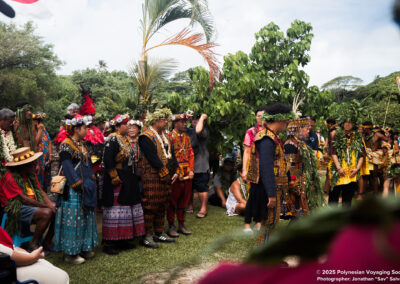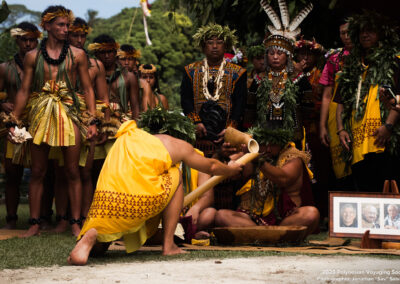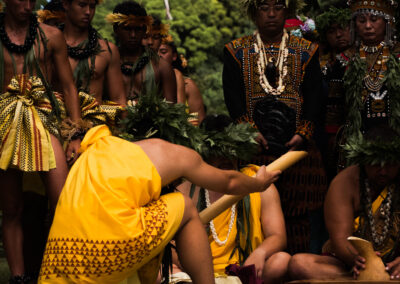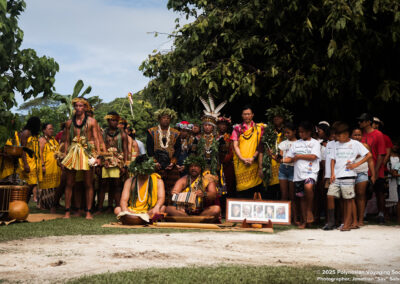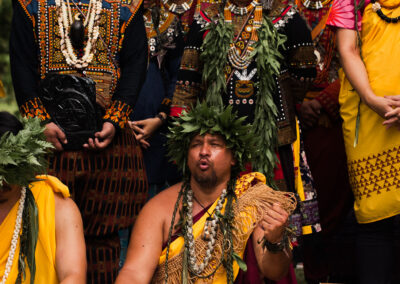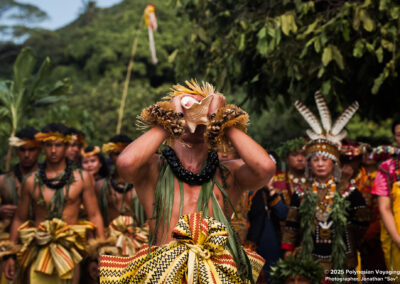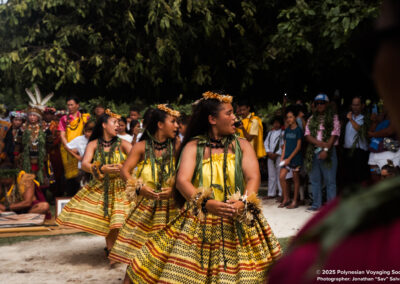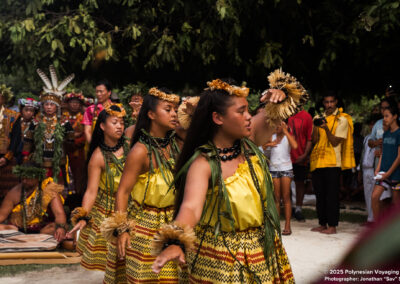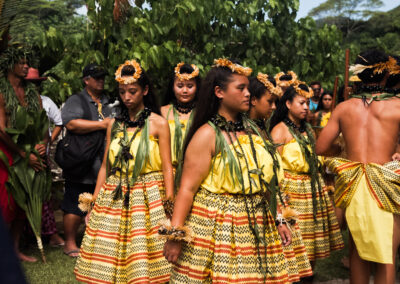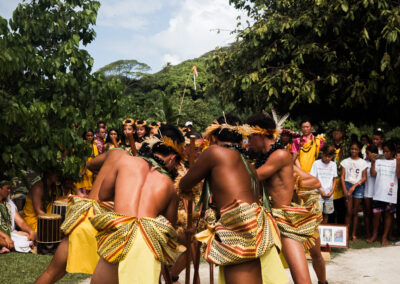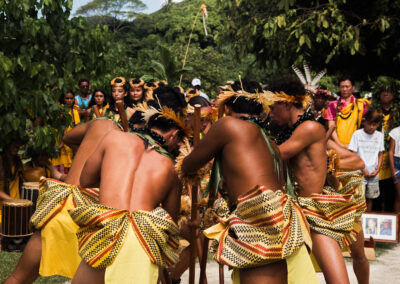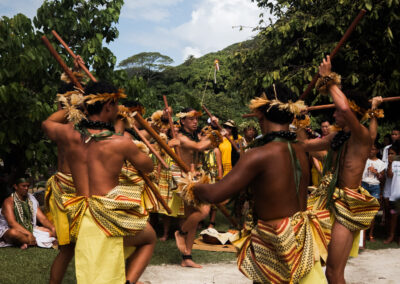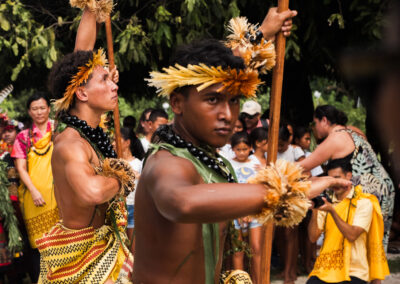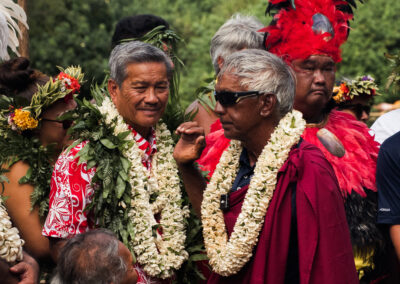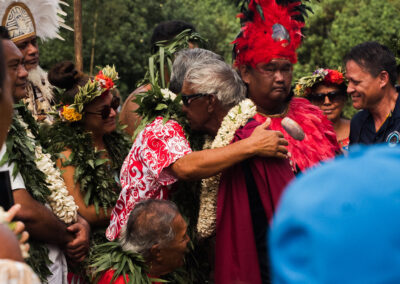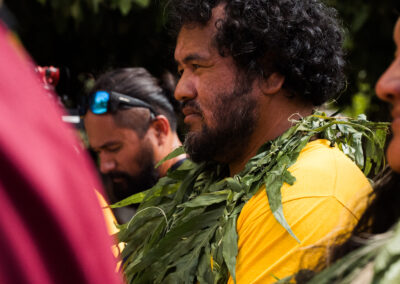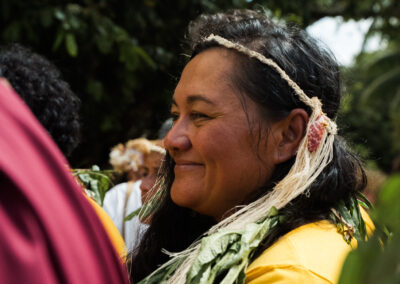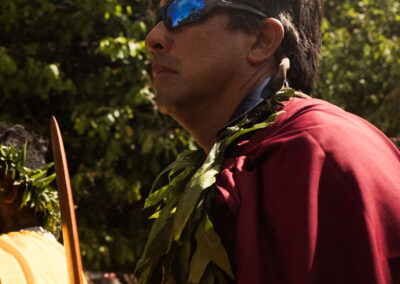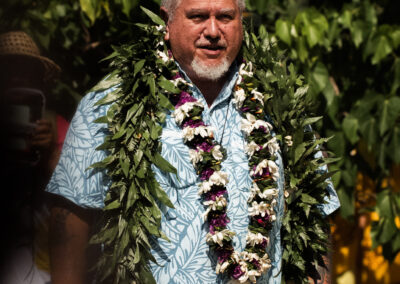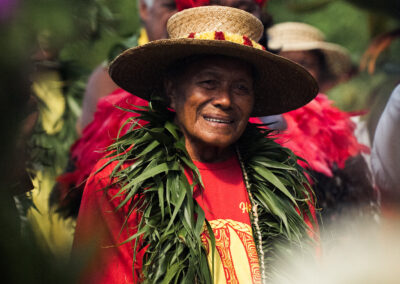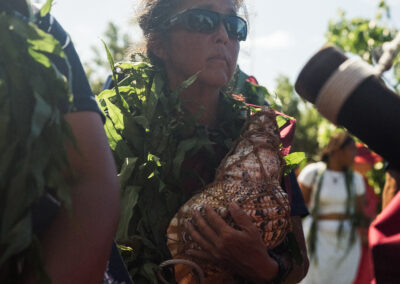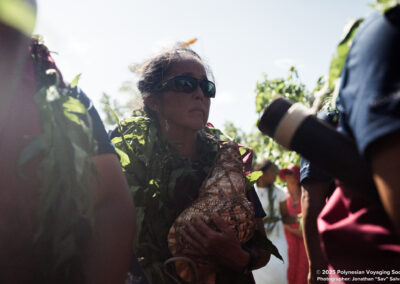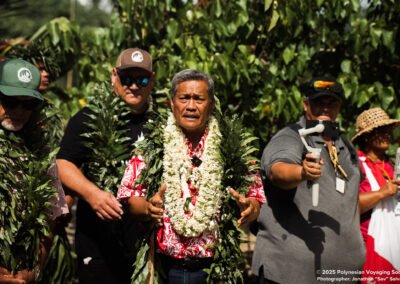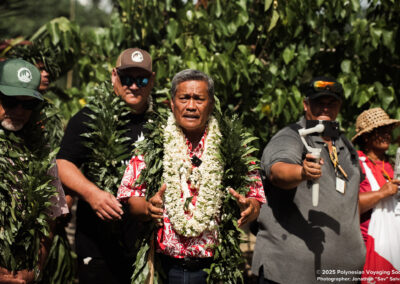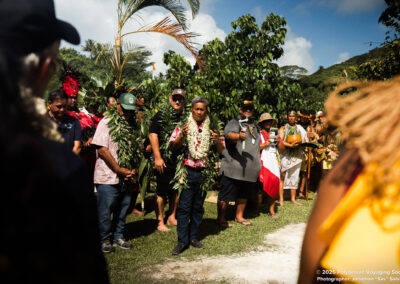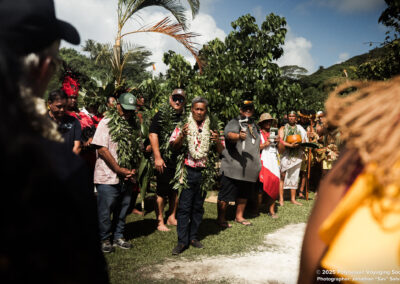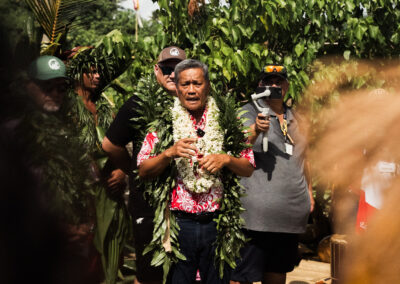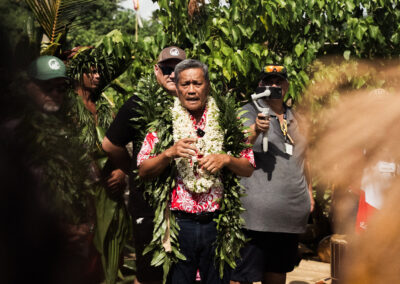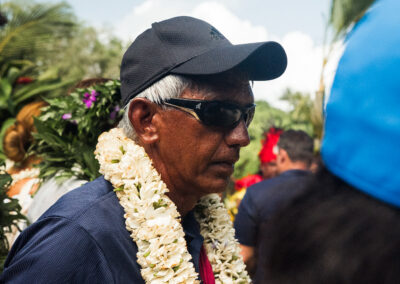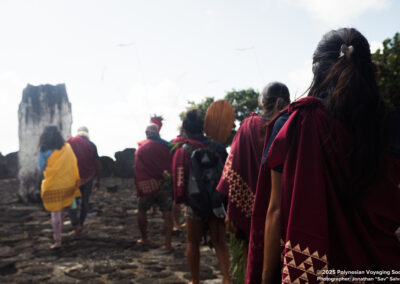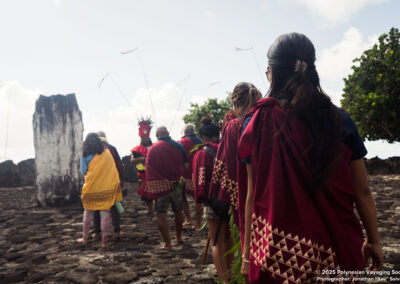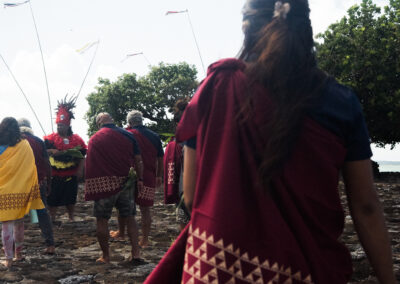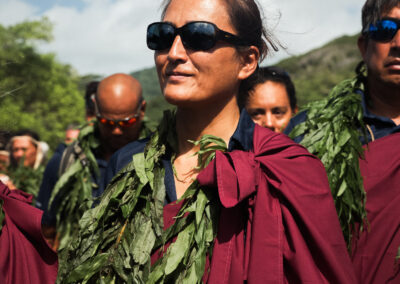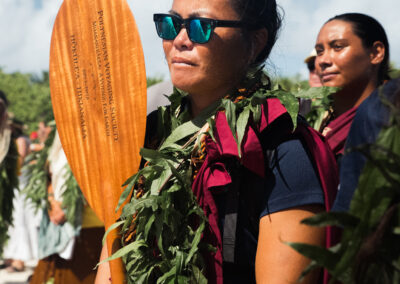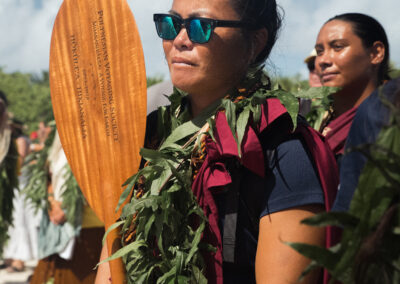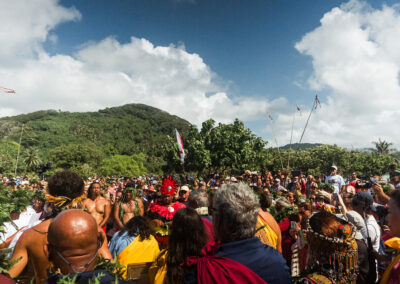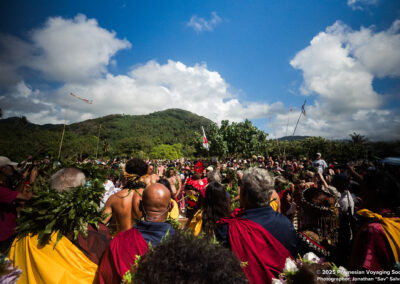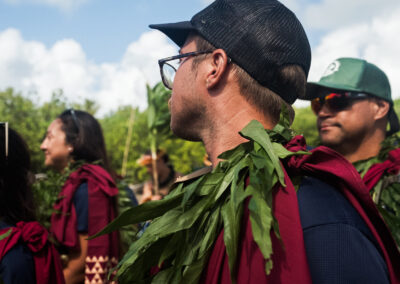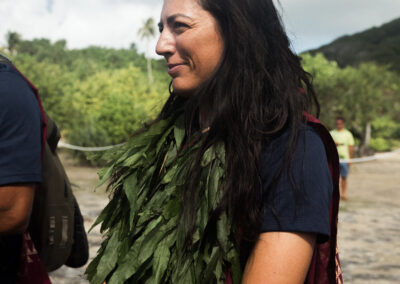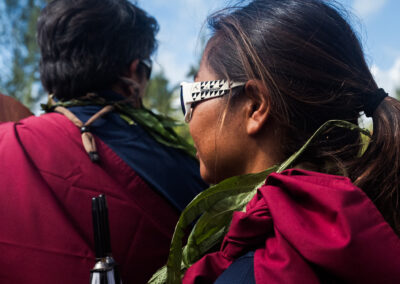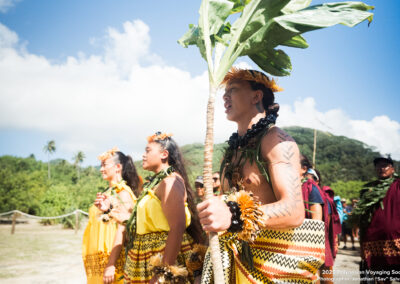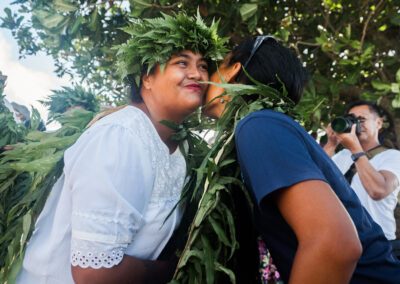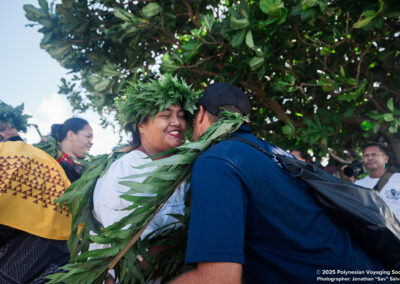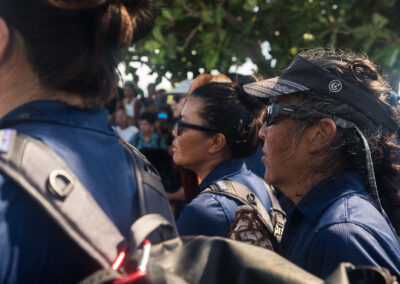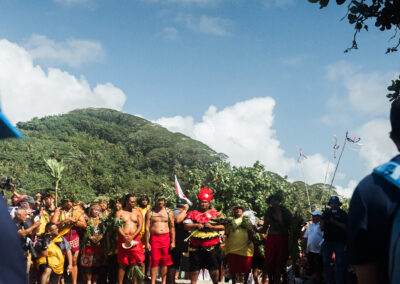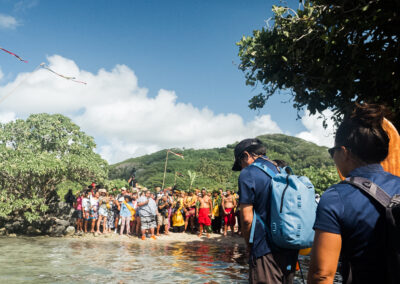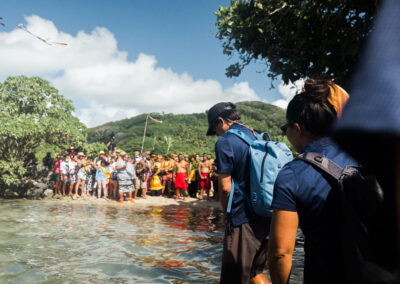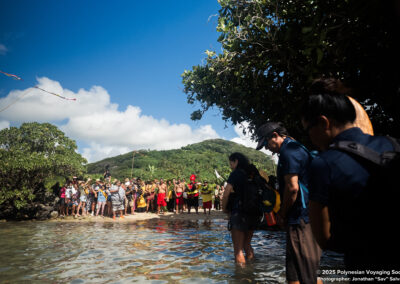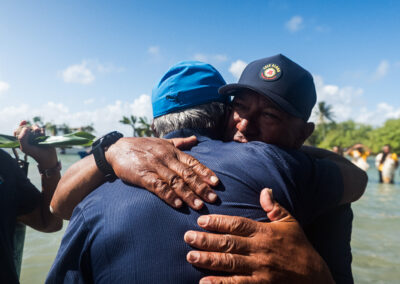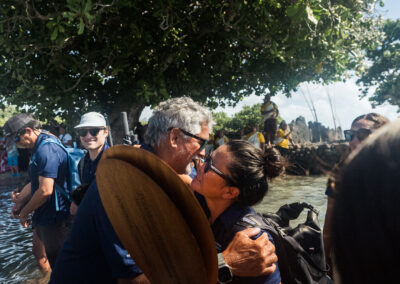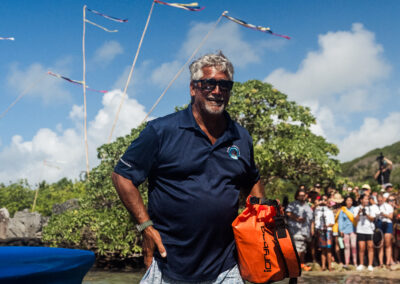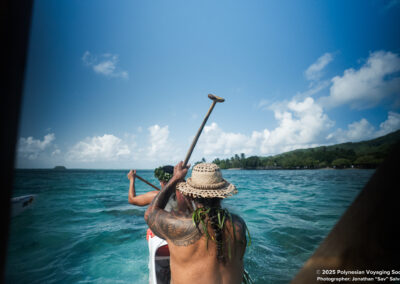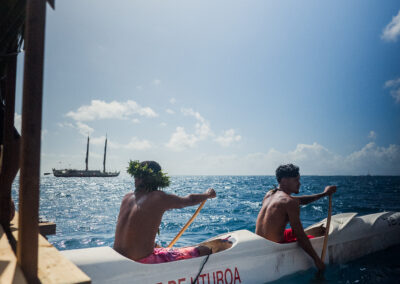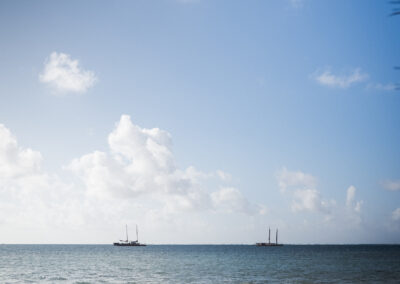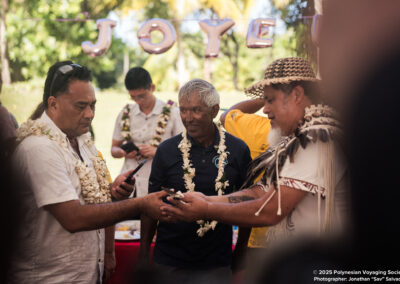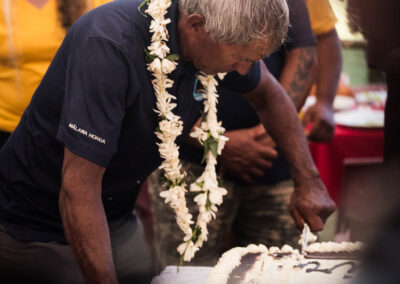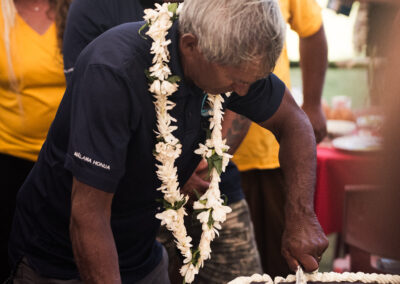Hōkūleʻa and Hikianalia make Landfall at French Polynesia’s Taputapuātea
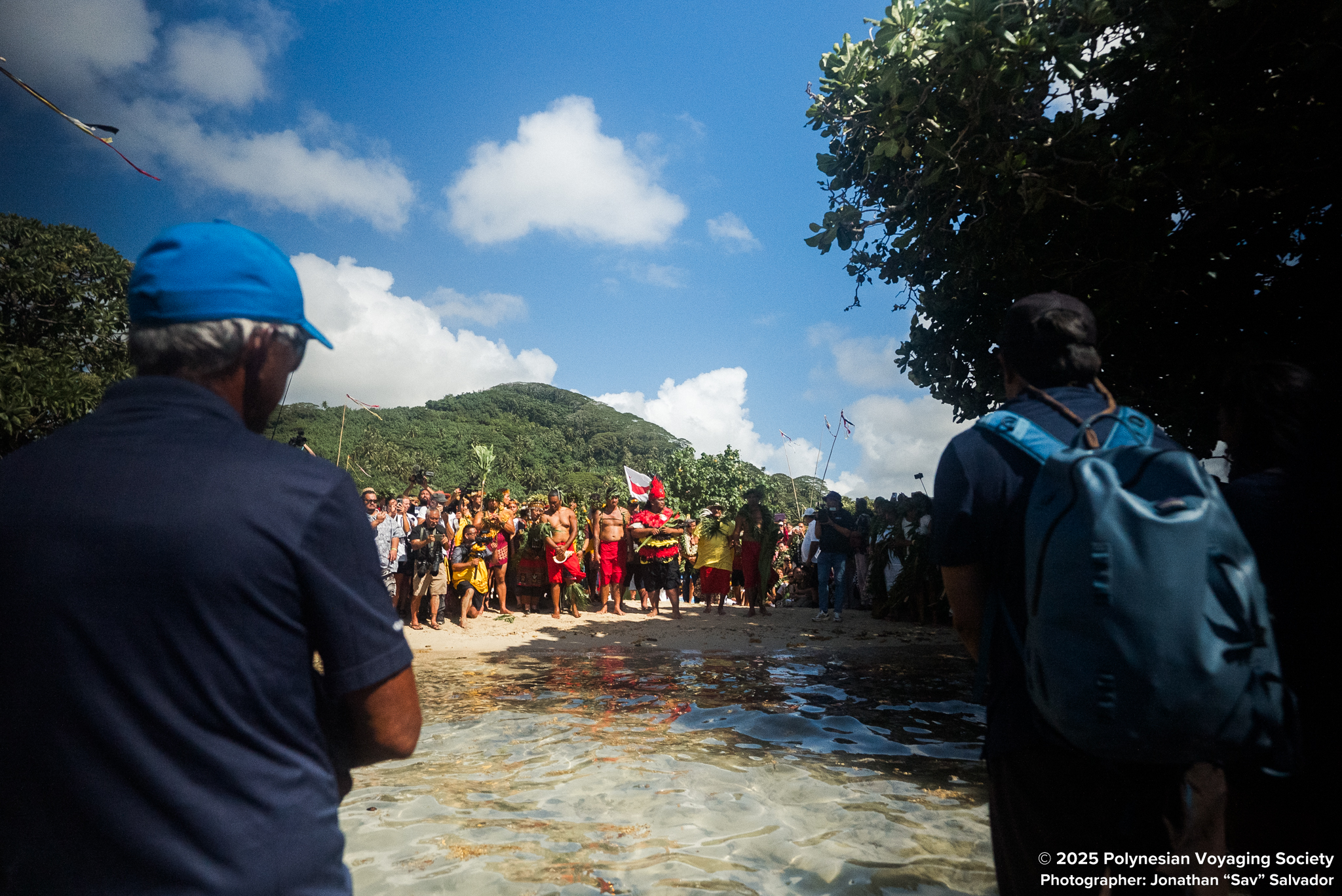
At approximately 9:45am on June 24, the Polynesian Voyaging Society’s traditional voyaging canoes Hōkūleʻa and Hikianalia, accompanied by Tahiti’s canoe Fa‘afaite, arrived at their first stop in French Polynesia: Taputapuātea. Located on the island of Raʻiātea, Taputapuātea is revered as the ancestral homeland and spiritual center of Polynesian voyaging. This momentous arrival follows a 21-day, approximately 2,500-mile open-ocean journey from Hilo, Hawaiʻi. This leg relaunched the Moananuiākea Voyage’s four-year circumnavigation of the Pacific.
The three canoes entered Taputapuātea’s sacred Teawamoʻa pass, greeted on the water by paddling canoes carrying Taputapuātea cultural leaders who raised their paddles to the sky, symbolically “putting the kapu (sacred restriction) to sleep,” and then welcomed the voyaging canoes into the lagoon to moor.
After anchoring, crew members were transported to shore, where they stood in the shore’s waters and were greeted by Taputapuātea High Priest Andre Maramatoa. Following ancient protocol, the high priest acknowledged the voyagers, and invited them to declare their identity and purpose. The ceremony included the sounding of the pū (conch shell), drumming and chants.
Wearing red kihei (ceremonial wrap), the crew joined in a sacred procession to Hauviri Marae for a brief tribute, then continued to the front of Marae Taputapuātea where they gathered reverently at its entrance. The crew members and delegations then walked onto the marae to present gifts.
Dignitaries including Taputapuātea Mayor Tawana Thomas Motame, French Polynesia President Moetai Brotherson, Kaviyangan Paiwan Tribe of Taiwan’s princess Zuljzulj Zingrur and Hōkūleʻa Pwo Navigator Nainoa Thompson offered remarks, which were followed by hula performed by the Kamehameha Schools delegation. Taiwan’s Kaviyangon Paiwan people played an ancestral nose flute and burned millet during the ceremony to call upon the spirits.
The ceremonial day concluded with a traditional ʻAwa Ceremony and a moving performance by a local children’s group, closing with a sense of intergenerational unity and shared purpose.
“It was an honor to be on Hōkūleʻa and to let her go…to allow her to take us to our ancestral home of Taputapuātea. Coming home is really about recognizing our ancestral family and remembering that family values are the foundation for peace. This arrival was especially meaningful after celebrating the 50th birthday of Hōkūleʻa. I was here 49 years ago, in 1976, during Hōkūleʻa’s first voyage to French Polynesia. And to see how far we’ve come, transcending from ceremonial protocol to engagement of family of Polynesia, the biggest country in the world. To see the elders of Taputapuātea still here today speaks to the strength of our shared commitment to each other. Taputapuātea is more than a place, it is a sacred center, and it is now a World Heritage Site, and a reminder that we are one family, one oceanic family, connected by deep roots and an unbroken voyage,” said Nainoa Thompson, Pwo Navigator and CEO, Polynesian Voyaging Society.
Taputapuātea is more than a sacred site, it is the piko (center) of Pacific voyaging heritage. In ancient times it was a place where navigators gathered to train, exchange knowledge, and launch voyages that connected the far corners of the Pacific. As the ancestral homeland of many Polynesian voyagers, it served as a central hub for genealogies and spiritual protocols. It is from this marae that ancient voyagers and navigators are believed to have departed to explore and settle the Pacific—including Hawaiʻi, Aotearoa (New Zealand), and Rapa Nui (Easter Island). Taputapuātea is recognized as a UNESCO World Heritage Site and remains one of the most significant cultural and spiritual landmarks in the Pacific. Its legacy continues to guide and inspire the next generation of voyagers, wayfinders and stewards of the ocean.
This is the first time Taputapuātea was the first stop for Hōkūleʻa on a voyage to French Polynesia. Both Hōkūleʻa and Hikianalia last visited the sacred site in 2022. The visit reaffirms deep ancestral connections with Taputapuātea and honors the sacred trust to carry forward traditional knowledge, values, and relationships across the Pacific.
Hōkūleʻa and Hikianalia were originally scheduled to stay in Taputapuātea until Thursday, however, due to forecasted weather, the canoes departed for Papeʻetē, Tahiti, early this morning. A celebratory arrival ceremony is scheduled in Papeʻetē on Saturday. The canoes are expected to spend approximately one month in French Polynesia, before continuing on the Moananuiākea Voyage with subsequent stops in the Cook Islands, Sāmoa, Tonga and Aotearoa in 2025.
